We weld, repair and rebuild semi tractor trailer car haulers.
01 Before pictures of the damage.02 Rebuilding car hauler frame drivers side.
03 Rebuilding car hauler frame passenger side. This is the page you are now on.04 Rebuilding car hauler hydraulic stabilizer frame mount flange.
Now you can see how much trash was inside the frame before we power washed it out.
When we are cutting junk out, you can see how tedious it is to do precision work while leaving all the good thick metal in place to attach our components to.
We now know the shape of the components we want to build. Time to cut them with precision. All the other cheap sloppy welders cut them with torches.
Not us. I refuse to drop to that level.
We can make perfect components for a perfect fit. Without a perfect fit you cant have a perfectly strong joint weld. Our tolerance can go to 1/64th of an inch when necessary. A torch cut goes to plus or minus 3/8" depending on who's doing it.
The junk metal has to go. I wont tolerate a sloppy fit.
Ok, major improvements. Now we are close to putting in some strong metal.
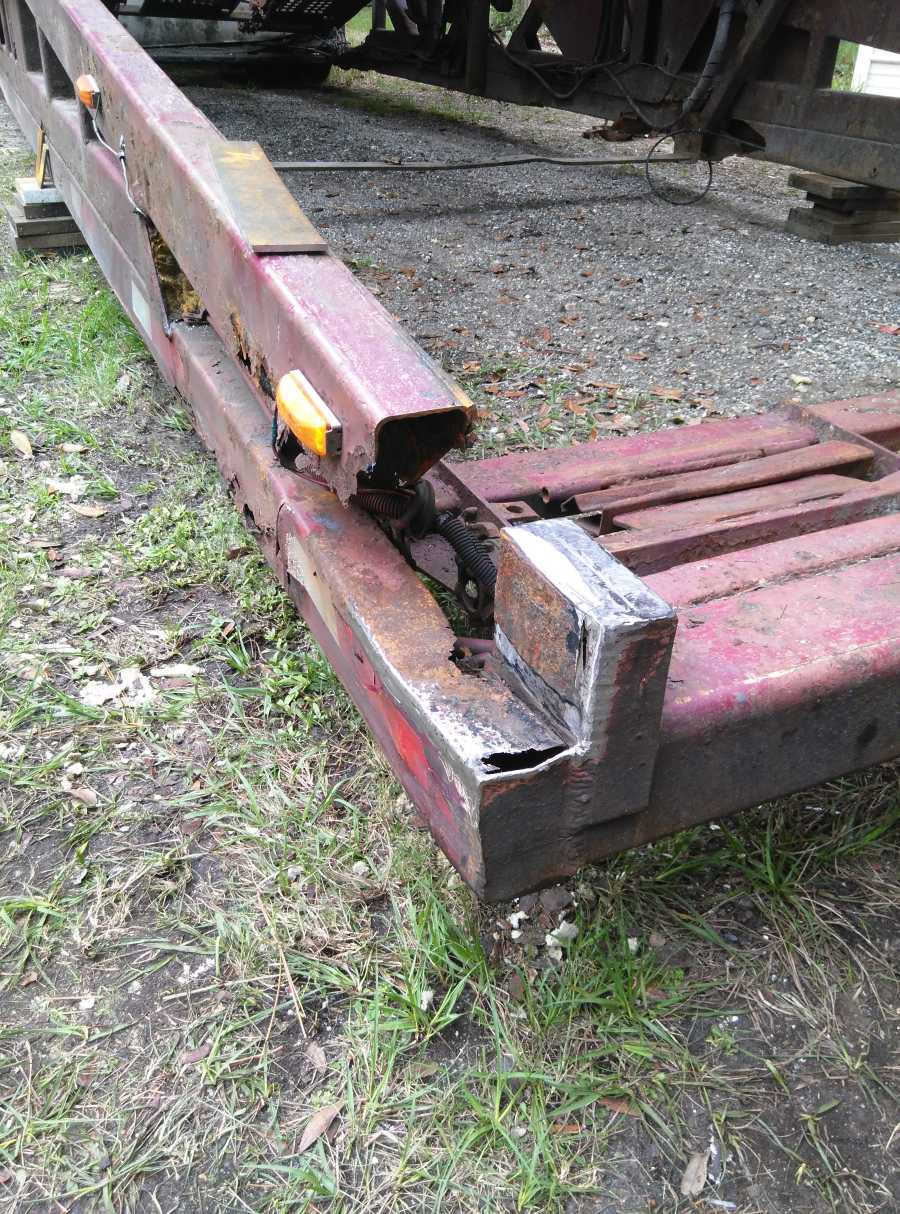
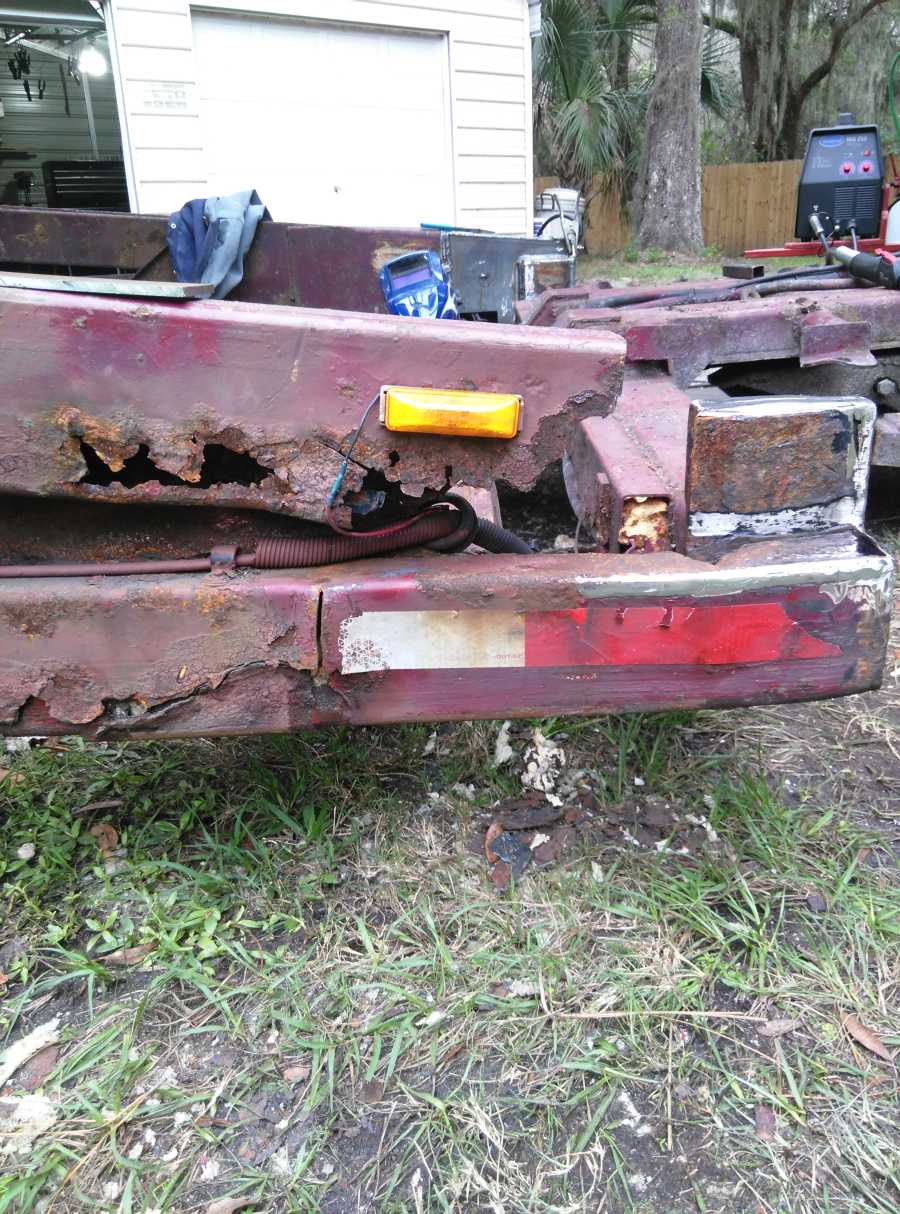
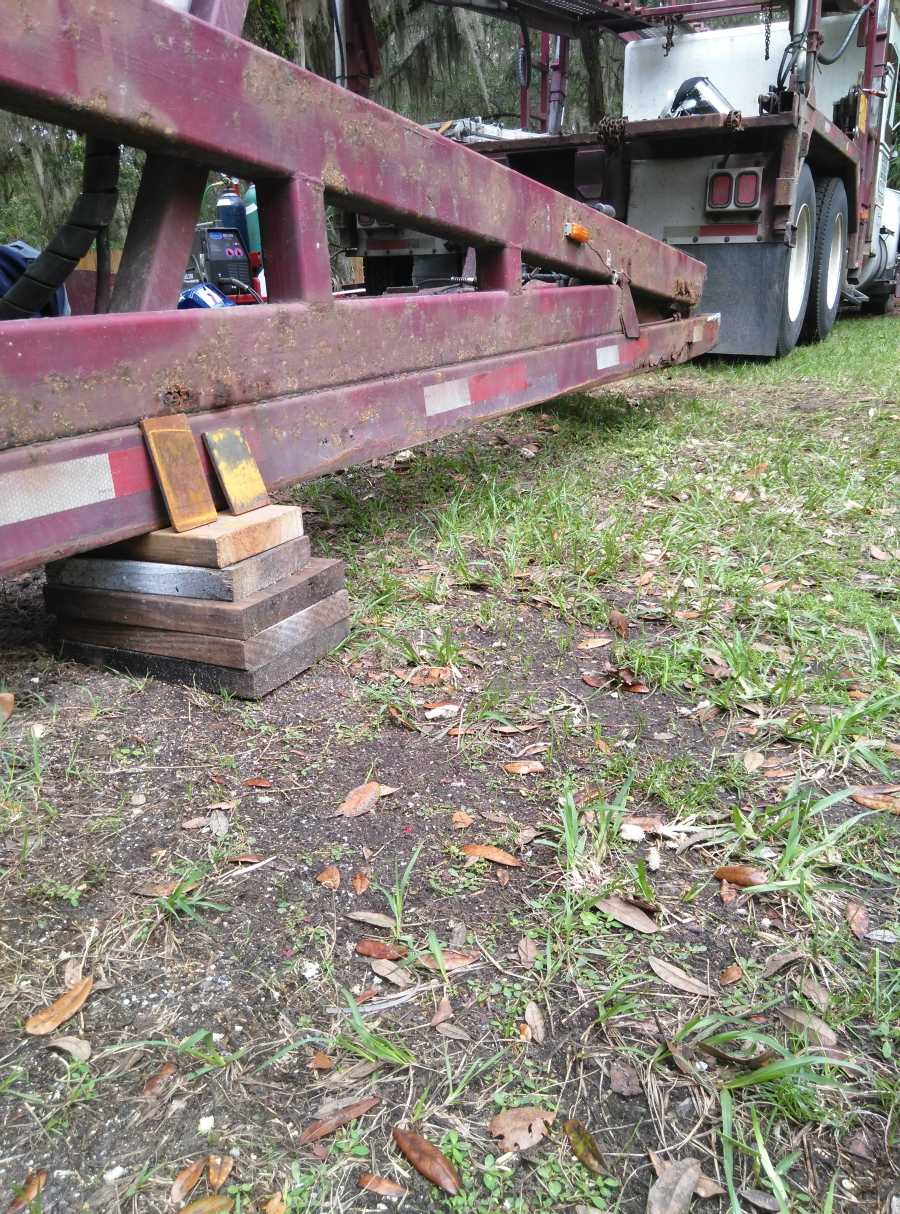
Why do you think she is cutting a small notch out of that huge angle iron?
Oh my goodness. Quality preparation is 95% of the job. The actual weld is only 5%. Well, that is unless your my competition.
For them prep is only 20% of the job. I know because I frequently redo what they've done first. Of course nobody brings the work back to the shop that screwed it up the first time.
So it always comes to me the second time.
See how precise those two corner joints fit? I want that 90 degree indentation left wide open so I can fill all of it in with weld that has perfect full penetration to each piece.
I literally want to create my own corner, that ties/locks the two pieces together.
That piece under my left elbow will slide forward to make a perfect joint to that head plate I am welding on this car hauler frame.
Of course we have pre-tested the fit and if necessary, already made adjustments. Its not that all our joints fit perfectly the first time, its that all our joints fit perfectly the last time, the time we weld them together.
If you look closely you will see we didn't remove all the rust. But look again. We removed all the rust where the weld had to go.
Also you can see I don't mind some gap between joints because I can make my weld bigger to bridge it. Notice where the weld gets larger making the perfect bridge between any joint no matter the size of the joint width.
What I don't want, is two pieces so tight together that I cant get my weld between them and instead the weld sits on top lacking penetration and lacking connection strength.
Below: Your wondering why I left that gap. That is not an accident or sloppy work. You will see later down below. I filled part of it in, buy why not all of it? Why? Curious minds want to know.
When your bending over upside down to weld on the bottom of something, its not always the prettiest weld. So I use two passes and build it up to make sure I have strength even if I don't have looks.
Now you can see why I left that gap previously and didn't fill it in earlier. Its because I wanted to join that piece to this piece with the strongest strength.
And I designed that gap to be the approximate width, same as the thickness of the two pieces. Now its easy for my weld to go to the same depth/thickness of the two pieces and have full penetration.
Ut Oh. My pictures are a little out of order, out of sequence. Now you can see why I weld for a living and don't make websites for my income.
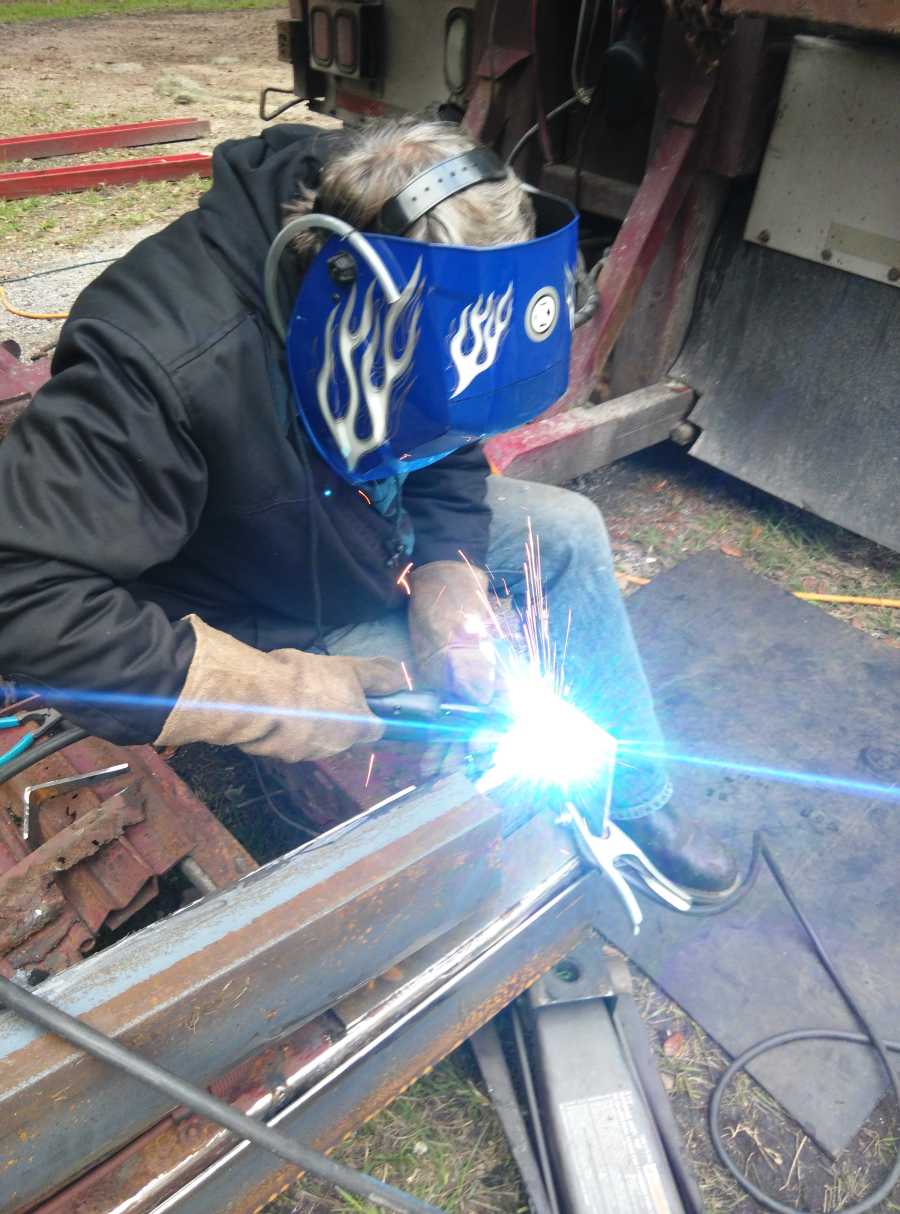

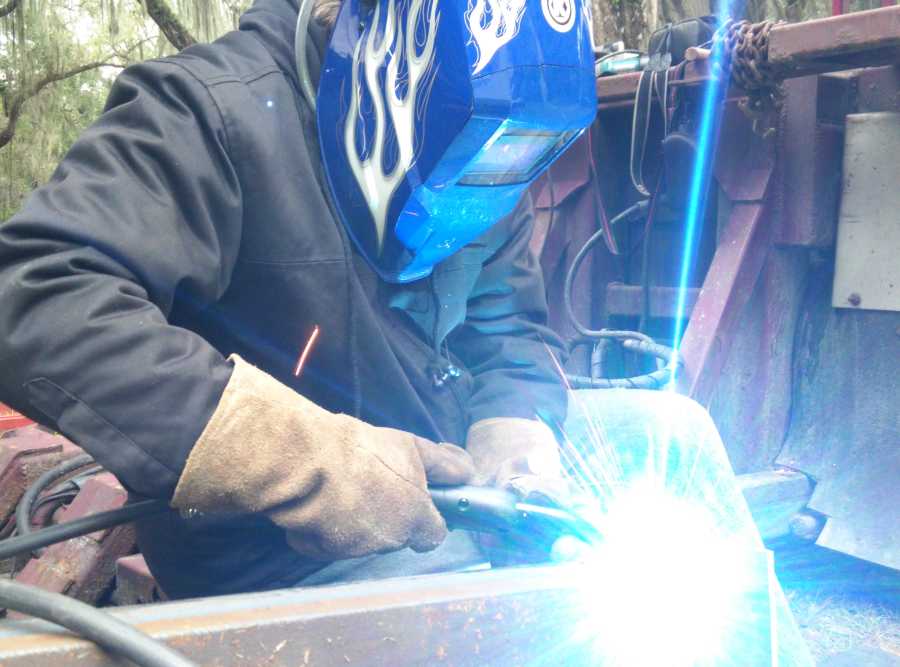
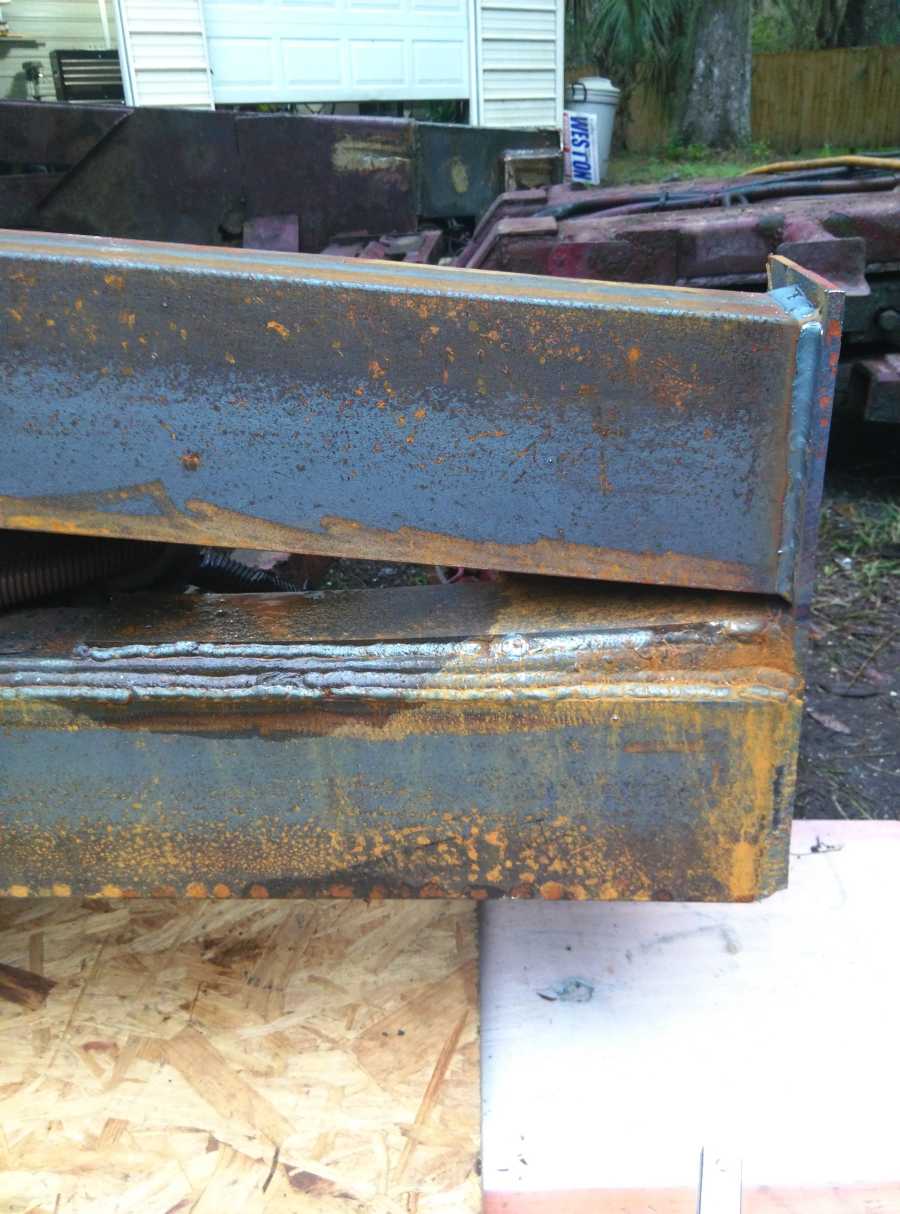
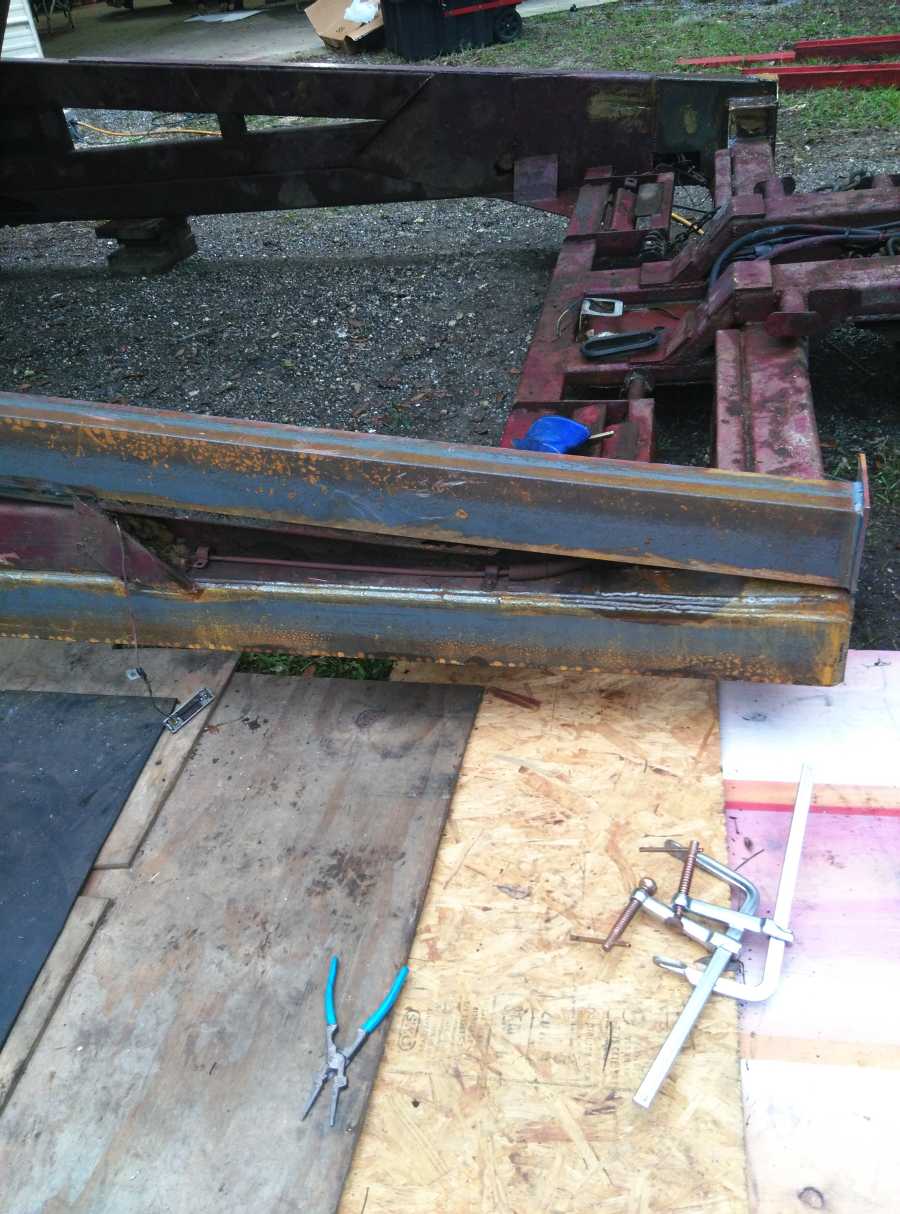
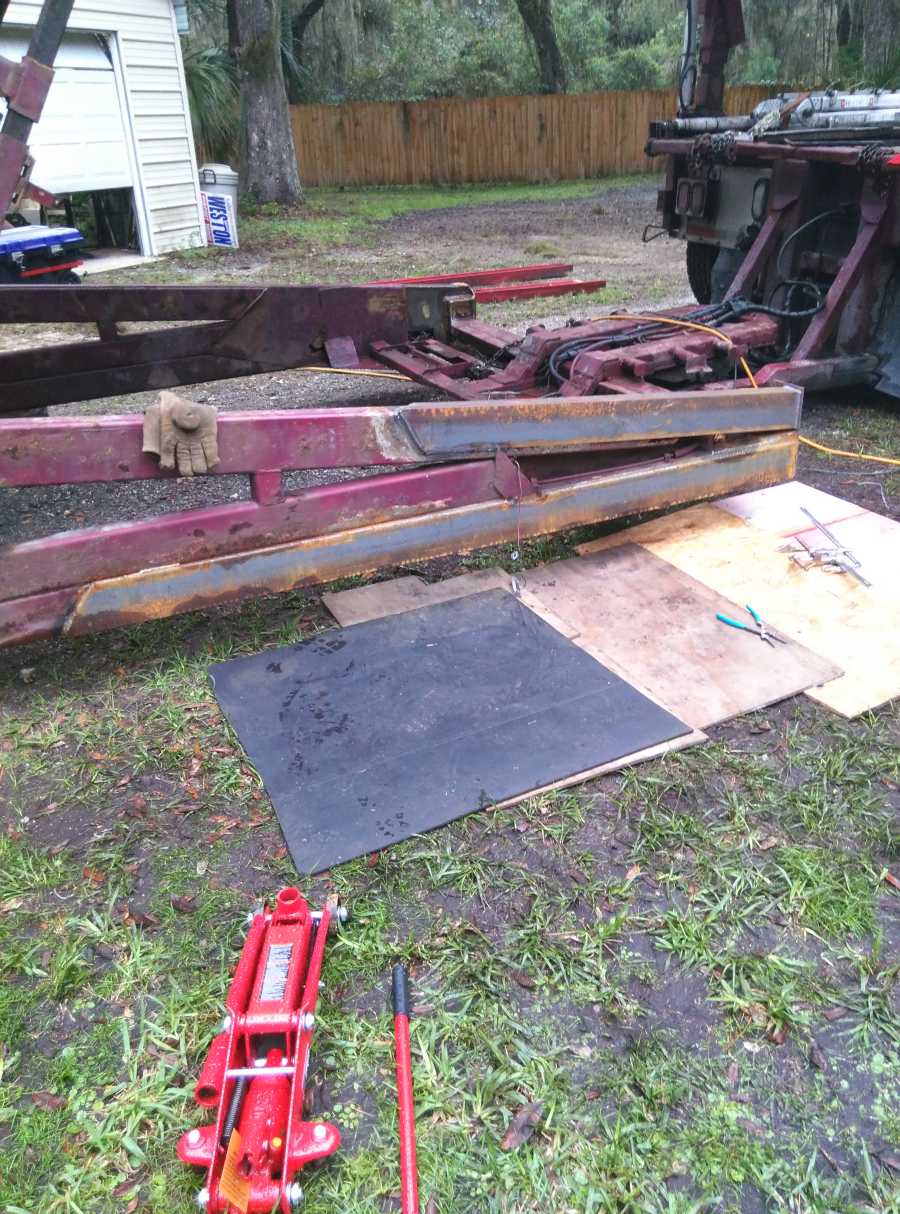
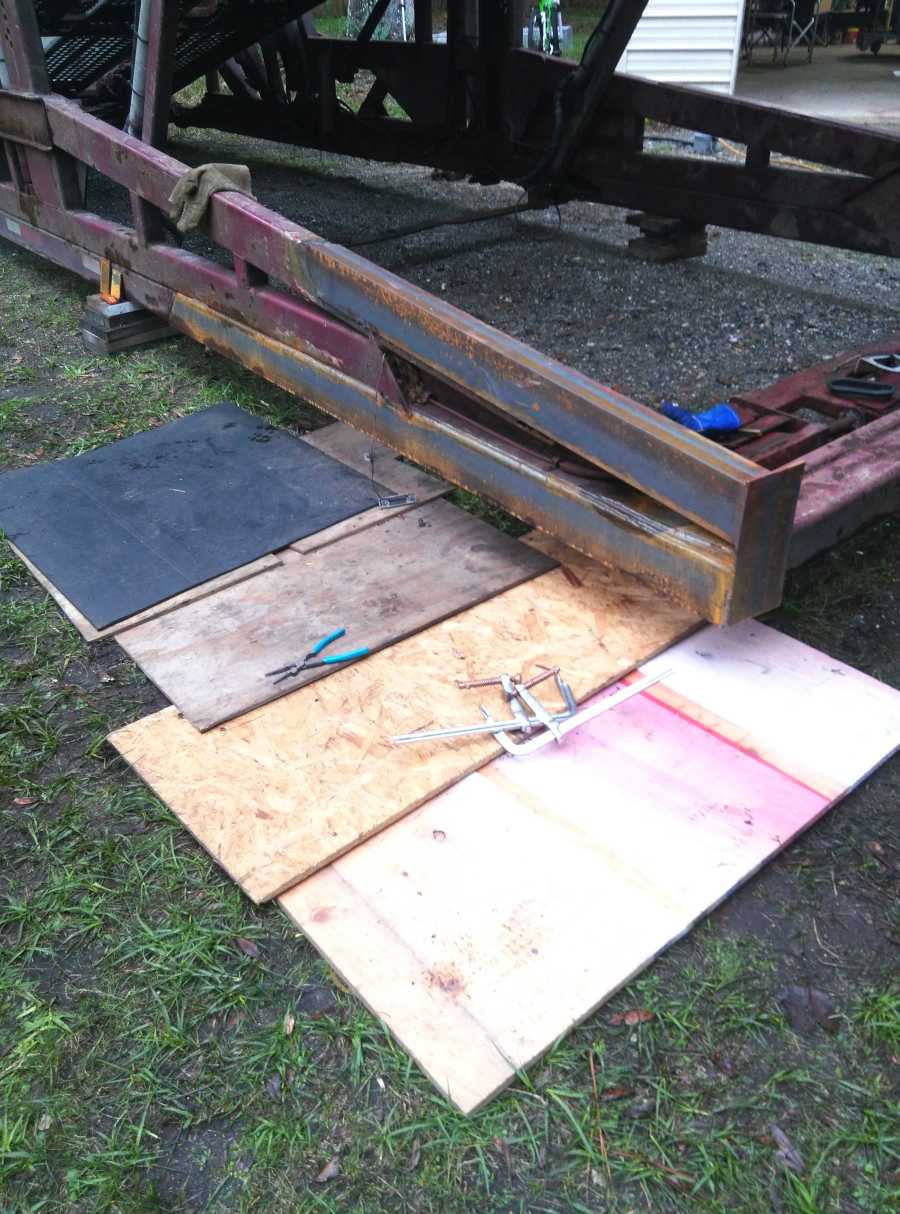

01 Before pictures of the damage.
02 Rebuilding car hauler frame drivers side.
03 Rebuilding car hauler frame passenger side. This is the end of page 03. To continue go to page 04.04 Rebuilding car hauler hydraulic stabilizer frame mount flange.






